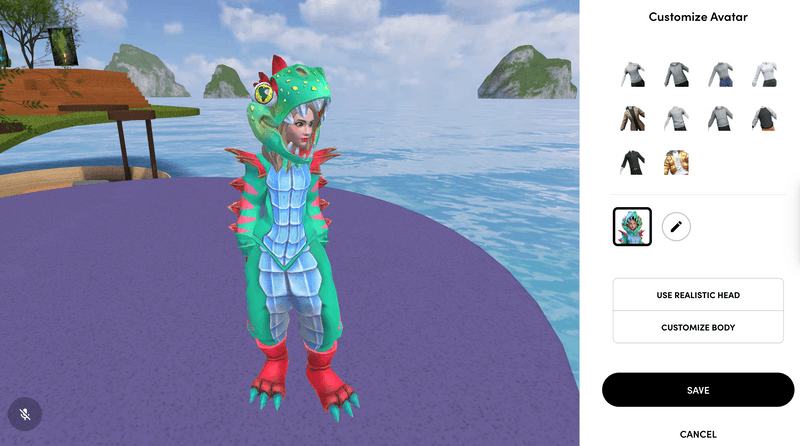Avatars are our digital representatives in the virtual world. The characters we control in video games can be thought of as avatars, and we will increasingly adopt avatars to represent us as we shop, socialize, learn, and work in connected online environments we call the metaverse.
And someday, in the future, as artificial intelligence becomes more and more capable, it can do much more. He can give speeches, give lectures, run meetings and seminars on my behalf, and possibly even write articles for me!
In fact, one day everyone can have their own digital avatar that they can submit to the digital space to do whatever needs to be done. Even today, we see them being used in increasing numbers, for example:
A number of companies use digital avatars to conduct customer service. They can be controlled directly by a person for one-on-one interaction, or they can be powered by chatbots that allow them to handle many customer queries at once.
They can also add a human touch to synthetic video by appearing in content such as corporate training videos and how-to guides instead of more expensive and unpredictable human actors.
Digital avatars have also been used in health and treatment settings, such as teaching social and interaction skills to children with autism.
How to Create Metaverse Character?
Anyone who wants to start creating their own digital avatar has a number of tools and services available right now.
Traditionally, digital avatars can be as simple as a 2D image used to identify us on social media or in an online chat room.
The next step in their evolution came with the arrival of 3D online environments such as Second Life (in many ways an early prototype metaverse) and later platforms such as Meta Horizon Worlds.
But these days, some avatars created from video footage and almost indistinguishable from the real thing can look super realistic.

Each has its advantages. More realistic avatars can create more immersive experiences for the audience or anyone interacting with them. Simpler ones are much faster and cheaper to build, and they can also be more flexible. For example, you can quickly change their clothes, accessories or hairstyles to suit different purposes or environments!
Provides a range of provider services. Synthesia allows you to create very realistic, high-end avatars for use in synthetic video content.
Ready Player Me is a service for creating full-body, 3D avatars that can then be exported to a number of different metaverse environments, including VRChat and Somnium Space.
Bitmoji is a tool that has been around for a while and allows anyone to create cartoon avatars. Using a software development toolset, it can then be imported into a wide range of games and applications, allowing users to take their personalities with them as they move between virtual worlds.
You can even use a service like Tafi, which lets you dress up and decorate your personalized avatar with branded products from global names like DC Comics, Coca Cola, and Champion. Accessories are sold as NFT and allow you to show off that your digital twin is wearing something original and unique!
Best Metaverse Avatar Creators
Below we have listed the best Metaverse avatar creators. You can choose any of them to create an avatar for yourself.
1. Avaton
With Avatoon you can create cartoon avatars that look like you. It allows you to create full body avatars, choose various outfit options and enjoy creating a unique and cool avatar.
2. Bemoji
If you are looking for a 3D avatar maker that gives you a unique look, you can choose Bemoji. It includes various face characters and outfits to make your avatar unique from others.
3. MakeAvatar
You can use MakeAvatar as Metaverse avatar creator app to create your avatar. You can easily adjust your face and other body parts to make an avatar for yourself. Users can use well-known characters’ outfits or wear original ones.
4. Avatar SDK
Using the Avatar SDK, you can create lifelike avatars for yourself for the Metaverse. Here you can make personalized 3D avatars from selfies and it is an easy to use application that will help you create an avatar without wasting much time.
5. Ready Player Me
With Ready Player Me, you can easily express yourself online by creating an avatar. Here you can create an avatar using your online photo.

What’s Next?
As the technology used to create avatars evolves, we can expect them to have a life of their own, both inside and outside the virtual world.
One of the most interesting aspects of the metaverse concept is its ability to blend the virtual with the real. Soon we will not be limited to creating avatars that look and sound just like us, we can expect them to be an extension of our personality that we can use to express ourselves however we want. It’s not inconceivable that our avatar will one day appear as a hologram for giving a presentation or teaching a lecture in the real world.
Using AI, we can formulate conversations and lectures on our own. One way to imagine this is to think that avatars evolved from puppets under our direct control, into autonomous beings that can act in ways that are their own, even though they are informed by us.
The first steps in this direction can already be seen in projects such as the partnership between GeeneeAR and Ready Player Me, which allows anyone to overlay computer-generated avatar images on their real-life images.
This mix of the real and the virtual is where much of the creative value at the heart of the metaverse and web3 lies. Even if it were possible, we know that people don’t always want to spend all their time in virtual worlds. Avatars can become our representatives in these worlds, taking advantage of the convenience, flexibility and immediacy of the digital space for the benefit of our real-world selves.
It’s also interesting to think, for example, that “Eles 2.0”, unlike the real me, is for all intents and purposes immortal, that is, the real me can continue to learn, interact, and teach long after this mortal world is over. The ethical and philosophical implications of this are already being discussed.
As the real world and the virtual world get closer, avatars are likely to play an increasingly important role in our lives. Thanks to them, we will be able to spend more time with our friends and loved ones even when we are physically miles apart. Geography will cease to be a barrier to what we can learn and experience. Virtual reality and augmented reality will make these experiences more real and immersive than ever before. This is definitely a future we look forward to seeing!